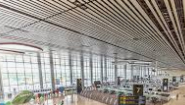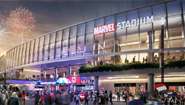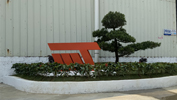Enhancing Architectural Charm: The Visual Appeal of Exterior Aluminum Wall Cladding
Author:Jayminton Time:2024-06-22
Aluminum Wall Cladding is celebrated for its profound visual impact in exterior decoration. Architects and designers leverage its aesthetic qualities to enhance the appearance of buildings across various architectural styles. The sleek, modern look of aluminum lends itself beautifully to contemporary designs, providing a clean and sophisticated finish that complements urban landscapes and modern structures alike.

One of the key advantages of aluminum Cladding lies in its versatility. Available in a spectrum of colors, textures, and finishes, it allows for creative expression and customization. Whether creating a bold statement with vibrant colors or opting for a more subdued elegance with matte or metallic finishes, aluminum cladding adapts effortlessly to the design vision. This flexibility empowers architects to achieve their desired aesthetic while ensuring harmony with surrounding environments.
Moreover, aluminum's ability to be formed into different shapes and sizes adds another dimension to its visual appeal. From flat panels that create a seamless façade to curved surfaces that add depth and texture, aluminum cladding offers endless possibilities for architectural expression. This versatility extends beyond aesthetics to functional considerations, allowing for innovative designs that optimize building performance and efficiency.
In addition to its aesthetic benefits, aluminum cladding contributes to the overall perception of a building's quality and durability. Its sleek appearance conveys a sense of modernity and professionalism, making it a preferred choice for commercial and institutional buildings seeking to make a strong visual statement. Furthermore, aluminum's resistance to corrosion and weathering ensures that its visual appeal remains intact over time, requiring minimal maintenance compared to other materials.
The visual impact of aluminum Wall Cladding is not limited to standalone buildings but also extends to urban landscapes and city skylines. Its reflective properties can interact dynamically with natural light, creating visually dynamic exteriors that change with the time of day and weather conditions. This ability to animate building Facades contributes to the overall vibrancy and character of urban environments, enhancing their visual appeal and architectural interest.

 S1 Clip-in Metal ceiling System
S1 Clip-in Metal ceiling System JMT-L4.2 U-Baffle System
JMT-L4.2 U-Baffle System JMT Aluminum Wall Cladding
JMT Aluminum Wall Cladding Aluminum Honeycomb Panel
Aluminum Honeycomb Panel Air-Condenser Cover
Air-Condenser Cover Metal Heat Cover
Metal Heat Cover Singapore Changi Airport T2 Arrival
Singapore Changi Airport T2 Arrival Australia Marvrl Stadium City Edge
Australia Marvrl Stadium City Edge Enterprise Information Announcement
Enterprise Information Announcement Construction Industry Solutions
Construction Industry Solutions About Jayminton
About Jayminton Contact US
Contact US